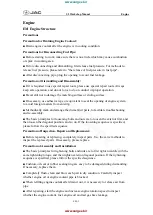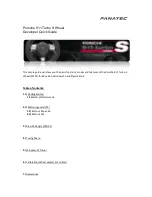
MYGALE
Technopole - 58470 Magny-Cours - France
Tel : +33 (0)3 86 21 86 21
Fax : +33 (0)3 86 21 86 22
10/58
3
.2.2
C
ASTOR
C
HECK
&
A
DJUSTMENT
The castor angle is the angle, in side elevation, between the steering axis and the vertical. It is
considered positive when the steering axis is inclined rearward.
You can check the castor angle in the same way in the front and in the rear suspension. The castor
angle can be calculated as follows:
Measure the angle of the steering arm plane for the front (or the wishbone mount plane for the rear)
to the horizontal; this is the measured castor angle (MCA). Positive inclined down to rear, negative
inclined down to front.
Calculate the true castor angle (TCA) as following:
Front Castor Angle
Rear Castor Angle
True castor angle
= MCA + 7.08°
= MCA - 25.41°
Base settings
8.21°
-22.81°
Base set up length, wishbone
ball centre to ball centre
556.4mm
578.9mm
The Castor angle influences the Castor Offset, the Mechanical Trail and therefore the force to turn
the wheel.
Castor Offset, (mm)
The distance in side elevation between the point where the steering axis intersects the ground, and
the centre of tyre contact. The offset is considered positive when the intersection point is forward of
the tyre contact centre and negative when it is rearward. (Base setting: FRT=31.23mm)
Mechanical Trail, (mm)
The perpendicular distance in side elevation between the steering axis and the centre of tyre contact.
It is considered positive when the steering axis is forward of the tyre contact centre and negative
when it is rearward. (Base setting: FRT=30.87mm)
The Castor Offset is along the ground plane while the Mechanical Trail is perpendicular to the steering
axis.
MCA
MCA
TCA
MCA
TCA
Car direction
Horizontal and
vertical lines











































